
Roots
Across generations, across continents, a profound query often rests upon the very crown of our being ❉ Can textured hair truly convey historical messages and cultural resistance? For those whose strands coil, crimp, and twist with myriad patterns, this is not a rhetorical question. It pulses with ancestral memory, with the very rhythm of survival and the persistent whisper of identity. To understand this, we must journey back to the elemental biology of the hair strand itself, seeing it not as inert fiber, but as a living archive, capable of holding narratives far older than spoken words.
The conversation around textured hair, particularly for individuals of Black and mixed-race lineage, extends far beyond superficial aesthetics. It plunges into the very core of being, touching upon lineage, memory, and enduring spirit. Every coil, every ripple, is a testament to unique biological blueprints and cultural resilience forged over centuries. The forms hair takes are as varied as the human experiences they crown, ranging from tightly wound z-patterns to gentle waves.
These structures dictate how light interacts, how moisture is held, and how the strands behave under different conditions. Understanding this fundamental architecture is the first step in appreciating how deeply hair is intertwined with ancestral practices and enduring cultural narratives.
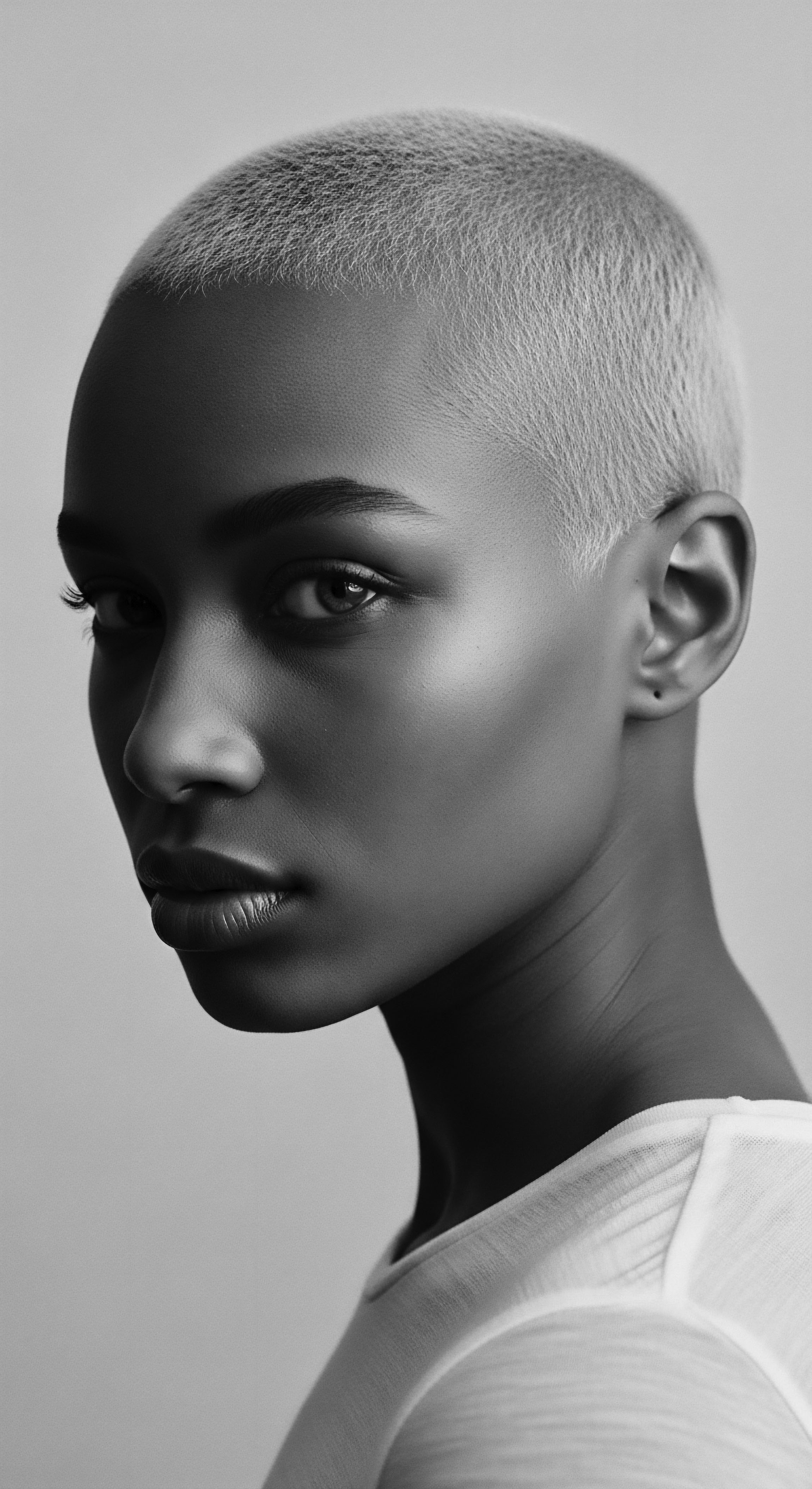
Hair’s Elemental Blueprint
At its most fundamental level, the anatomy and physiology of textured hair speak volumes of adaptation. Unlike straight hair, which typically grows from a round follicle, textured hair often emerges from elliptical or flattened follicles. This elliptical shape dictates the helical twist of the hair shaft, leading to its characteristic coiling and bending.
The distribution of keratin proteins within the hair fiber also varies, contributing to the strength and elasticity unique to different textures. This inherent structure, a biological fingerprint, has always dictated the parameters of care, styling, and expression across historical epochs.
From this biological foundation, our ancestors developed ingenious methods of care and adornment. They recognized, perhaps without the lexicon of modern science, the unique needs of these coils and curves. Ancient practices were rooted in observation of nature and the intuitive understanding of what helped hair thrive in diverse climates and environments. The deep conditioning properties of natural oils, the protective qualities of certain braiding techniques—these were not random acts, but responses born from an intimate familiarity with the very substance of their hair.

Understanding Hair’s Growth Story
The journey of each hair strand, from its anagen (growth) phase to its telogen (resting) phase, carries its own story. For textured hair, the intricate winding of the shaft makes it inherently more prone to dryness and breakage if not adequately cared for. This inherent vulnerability, however, did not lead to fragility in cultural practice; quite the opposite.
It led to the development of sophisticated care regimens and protective styles that prioritized hair health and longevity, simultaneously preserving its symbolic power. These methods, passed down through oral tradition and practical demonstration, ensured that the hair could continue to be a canvas for expression and a vessel for history.
Consider the historical factors that influenced hair health ❉ diet, climate, and the available natural resources. Ancestral communities, often living in close harmony with their environments, discovered and utilized local botanicals, clays, and oils for hair care. These ingredients, integrated into daily life, served as both nourishment and protection for the scalp and strands. The continuity of these practices, even when populations were forcibly displaced, speaks to a deeply held reverence for hair and its ability to connect one to their origins.
Textured hair, from its very cellular structure, acts as a living chronicle, whispering tales of ancestral adaptation and enduring cultural ingenuity.

Lexicon and Cultural Classifications
The language we use to describe textured hair today, while often influenced by modern scientific attempts at classification (such as curl patterns like 3A, 4C), holds a complex relationship with the historical ways hair was understood. In many African and diasporic communities, the classifications of hair were less about numerical categories and more about its spiritual meaning, its connection to social status, or its reflection of familial lineage.
- Knotting ❉ A descriptive term in some West African traditions, referring to the tightly coiled texture often seen as a sign of strength and resilience.
- Woolly ❉ While sometimes used pejoratively in colonial contexts, within many indigenous African languages, terms translated as ‘woolly’ often held positive connotations, referring to the dense, rich texture of hair that could be styled into impressive forms.
- Good Hair/Bad Hair Dichotomy ❉ A tragic legacy of colonial influence and colorism, where hair closer to European textures was deemed “good,” undermining the intrinsic beauty and value of textured hair. The resistance against this narrative is a significant thread in textured hair heritage.
Understanding these historical lexicons allows us to appreciate the deliberate reclaiming of terms and the celebration of textured hair in all its natural expressions today. It is a linguistic act of resistance, a refusal to accept imposed standards of beauty.

Ritual
If the ‘Roots’ section grounds us in the elemental biology and historical understanding of textured hair, ‘Ritual’ invites us to witness the dynamic artistry and profound spiritual significance woven into its styling and adornment. This segment asks not just if hair can convey messages, but how, through the very acts of manipulation, adornment, and care, it becomes a powerful medium for historical narratives and cultural defiance. These are not merely cosmetic practices; they are living traditions, passed down with a reverence that speaks to their enduring power as expressions of self and community.
The techniques, tools, and transformations associated with textured hair have never been static. They have evolved, adapted, and persevered, carrying forward the wisdom of countless generations. From the simplest partings to the most elaborate braided structures, each method holds a legacy. These rituals of styling are deeply intertwined with the social, spiritual, and political landscapes of Black and mixed-race communities throughout history.
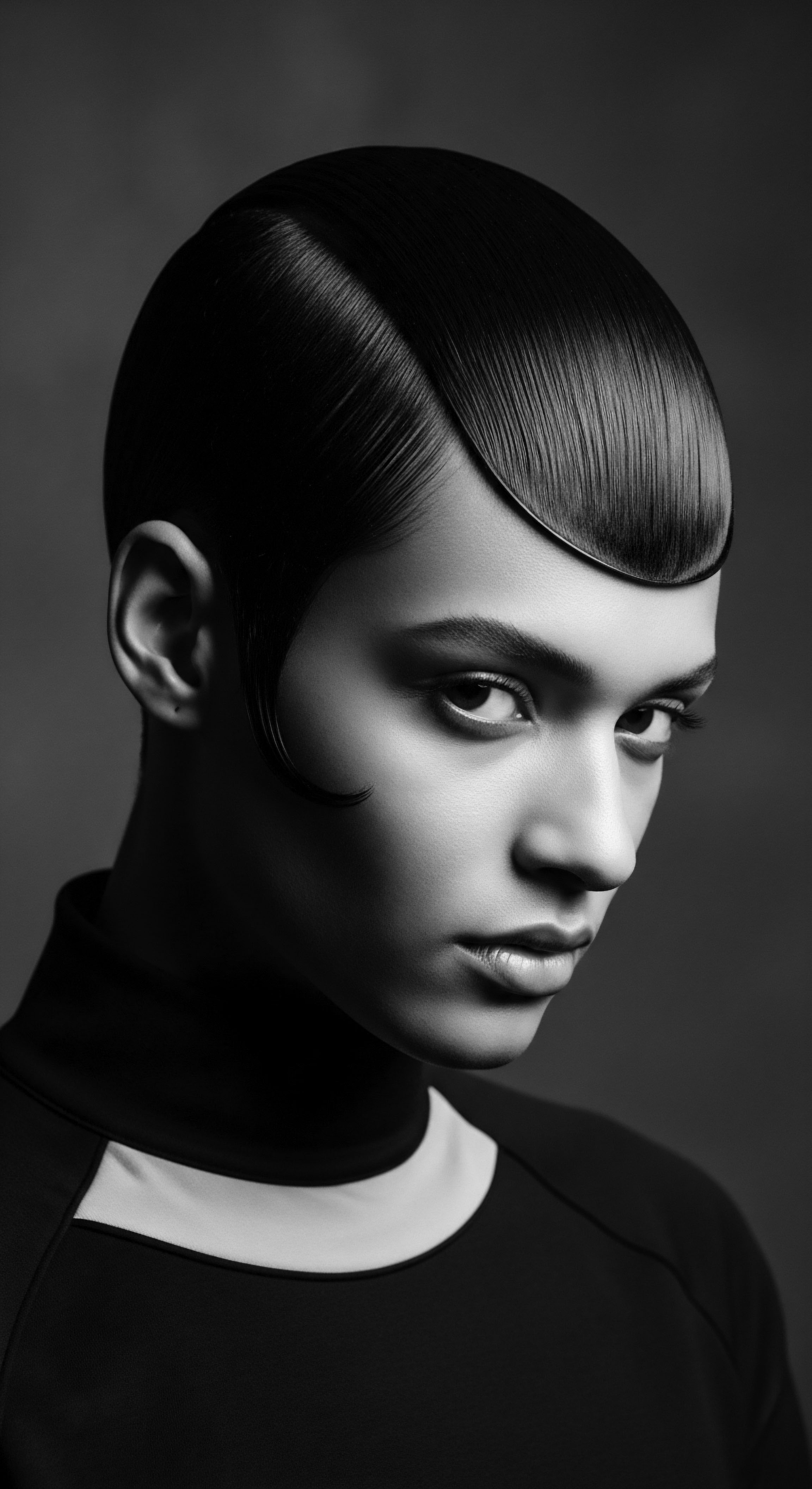
Styling as Historical Communication
Consider the myriad forms of protective styling, styles born of necessity, ingenuity, and a profound understanding of hair’s delicate nature. Braids, twists, and locs, far from being fleeting trends, possess an ancient lineage. In many West African societies, hairstyles were a visual language.
They could indicate a person’s age, marital status, tribal affiliation, wealth, and even spiritual beliefs. These intricate patterns were often created during communal gatherings, strengthening bonds and transmitting cultural knowledge from elder to youth.
The continuity of these styles, particularly in the face of forced migration and enslavement, stands as a testament to their enduring power. Enslaved Africans, stripped of many aspects of their identity, often held onto their hair traditions. These traditions became clandestine forms of communication and resistance. The very act of maintaining these styles, or adapting them to new circumstances, was a powerful assertion of humanity and heritage.

The Ingenuity of Ancestral Styling Tools
The tools used in traditional hair care are as important as the techniques themselves. Before the advent of modern combs and brushes, communities crafted instruments from readily available materials—bone, wood, and natural fibers. These tools were often imbued with cultural significance, sometimes carved with ancestral symbols or used in ceremonial contexts. Their design reflected an understanding of textured hair’s unique needs, preventing breakage and aiding in detangling and styling.
A noteworthy, though often less discussed, example of hair’s communicative power within the context of resistance can be found among the Ndjuka Maroons of Suriname. Forced into brutal plantation labor, these ancestors fled to establish autonomous communities in the dense rainforests. Their hair became a clandestine medium for transmitting vital messages. Intricate braided patterns, seemingly ornamental to their oppressors, often encoded information about escape routes, alliances, or warnings of danger.
A specific part or twist might signify a path through the jungle or a rendezvous point, known only to those within the Maroon community who understood the lexicon of hair. This intricate, non-verbal communication system, a direct form of cultural resistance, highlights the extraordinary ingenuity and profound symbolism imbued in textured hair (Price, 1999).
Styling textured hair transcends mere aesthetics, becoming a dynamic canvas for historical narrative and a quiet act of cultural defiance.
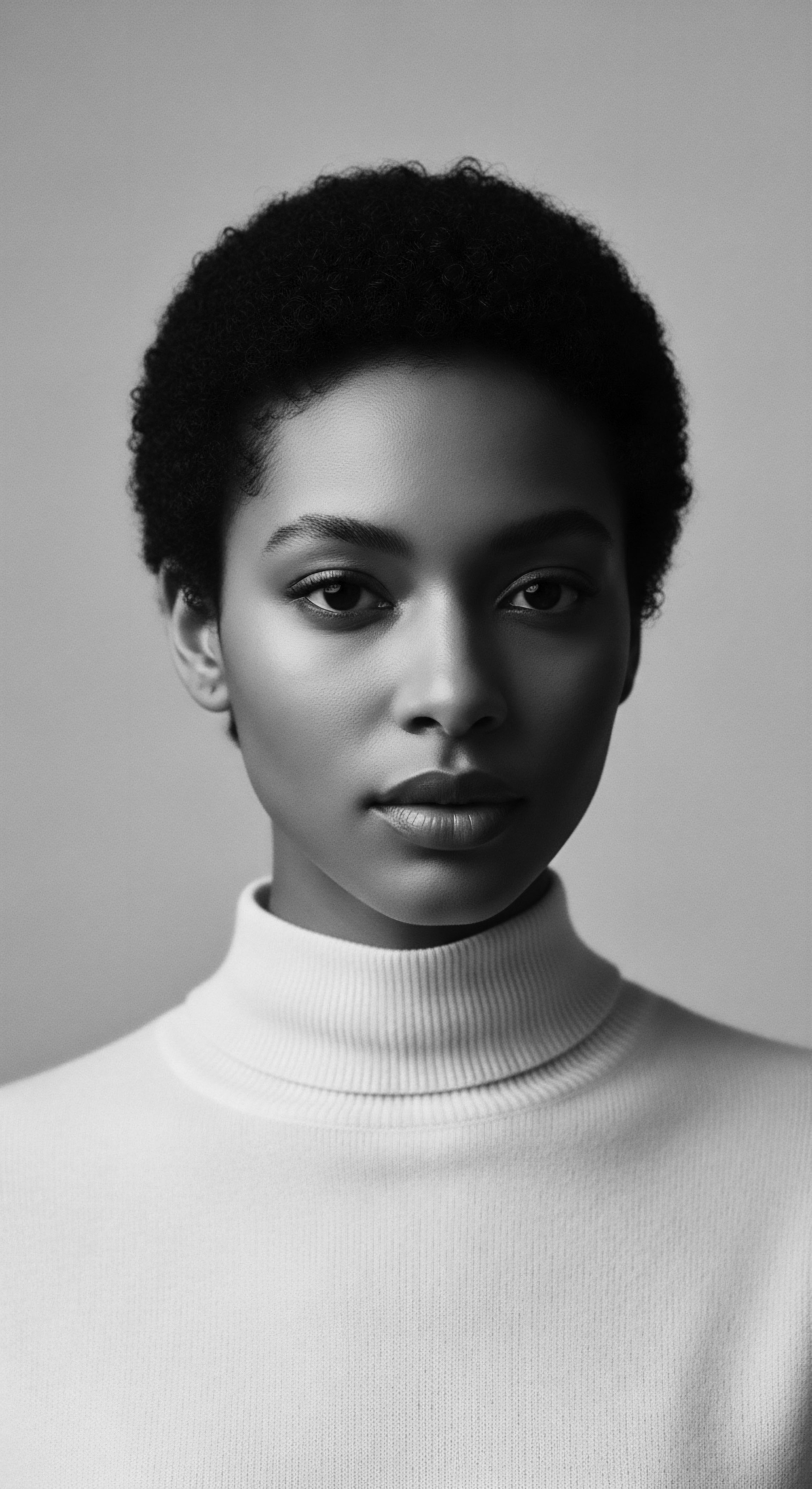
Wigs and Adornments ❉ Beyond Concealment
While wigs and hair extensions in contemporary society are often associated with fashion, their history within Black and mixed-race communities is complex and deeply rooted in heritage. In ancient Egypt, elaborate wigs served as status symbols and protective measures against the sun. In West African cultures, extensions made from natural fibers or human hair were used to create dramatic, sculptural forms that symbolized power, fertility, or spiritual connection.
| Ancient Practice Context Hair as a map for escape routes in times of enslavement, encoded in braid patterns. |
| Contemporary Parallel/Evolution Protective styles today, honoring ancestral ingenuity while providing versatile, low-manipulation options. |
| Ancient Practice Context Adornments signifying social status, tribal identity, or spiritual connection within African societies. |
| Contemporary Parallel/Evolution Hair accessories as statements of personal style and cultural pride, connecting to a legacy of elaborate adornment. |
| Ancient Practice Context The communal act of hair braiding as a means of oral tradition and intergenerational teaching. |
| Contemporary Parallel/Evolution Hair care gatherings as spaces for bonding, sharing knowledge, and reinforcing community identity. |
| Ancient Practice Context The evolving landscape of textured hair styling continues to reflect both historical messages and contemporary cultural expressions. |
In the diaspora, particularly during periods of intense oppression, the use of wigs or straightened styles was sometimes a means of survival, a form of forced assimilation to escape persecution or gain limited opportunities. Yet, even within these choices, there was often an underlying tension, a quiet rebellion in how one chose to present oneself, or in the private rituals of care that maintained one’s natural texture beneath. The ongoing conversation around cultural authenticity and personal choice in styling today is a direct descendant of these historical complexities.

The Unbroken Chain of Natural Styling
The resurgence of natural styling and definition techniques today is a profound re-connection to ancestral methods. Techniques like finger coiling, twist-outs, and braid-outs, while given modern names, echo practices that manipulated damp hair into defined forms for centuries. These methods celebrate the hair’s inherent texture, allowing its natural patterns to shine without chemical alteration or excessive heat.
The deliberate choice to wear one’s hair in its natural state, particularly in spaces that have historically penalized such expressions, is a powerful act of resistance. It is a statement of self-acceptance, a reclamation of a beauty standard often marginalized. This choice carries the weight of history, a nod to the countless ancestors who maintained their hair’s integrity against overwhelming societal pressure.
- Bantu Knots ❉ Originating from the Bantu-speaking people of Southern Africa, these small, coiled knots served as a protective style and a way to create defined curls when unraveled.
- Cornrows ❉ An ancient art form, cornrows have been found in depictions dating back to the Stone Age in Africa, symbolizing everything from social status to religious devotion, and later, maps for escape during enslavement.
- Locs ❉ Historically and spiritually significant in various cultures globally, including ancient Egypt, India, and among many African ethnic groups, locs represent a commitment to natural growth and often spiritual journeys.
The continued practice and adaptation of these styles today signifies a living, breathing heritage. It showcases how the physical manipulation of hair can be a continuous dialogue between past and present, a visible declaration of enduring identity.

Relay
The question of whether textured hair truly conveys historical messages and cultural resistance finds its most resonant answer in the ‘Relay’ of traditions—the continuous passing of wisdom, the innovative adaptation of ancient practices, and the profound assertion of identity through hair in the face of ongoing challenges. Here, the ancestral wisdom, the scientific understanding, and the wellness advocacy converge, illuminating hair’s role not merely as a biological structure but as a dynamic cultural artifact and a vibrant tool for systemic resistance. The hair on one’s head becomes a testament, a banner, and a living testament to a heritage that refuses to be silenced or forgotten.
The journey of textured hair is one of enduring legacy, its coils and patterns holding the deep memory of a people’s triumphs and trials. This legacy is actively preserved through intentional care, rituals passed down, and the conscious choices made in how one presents their hair to the world. Each strand is a conduit, relaying stories from deep history to the lived present.
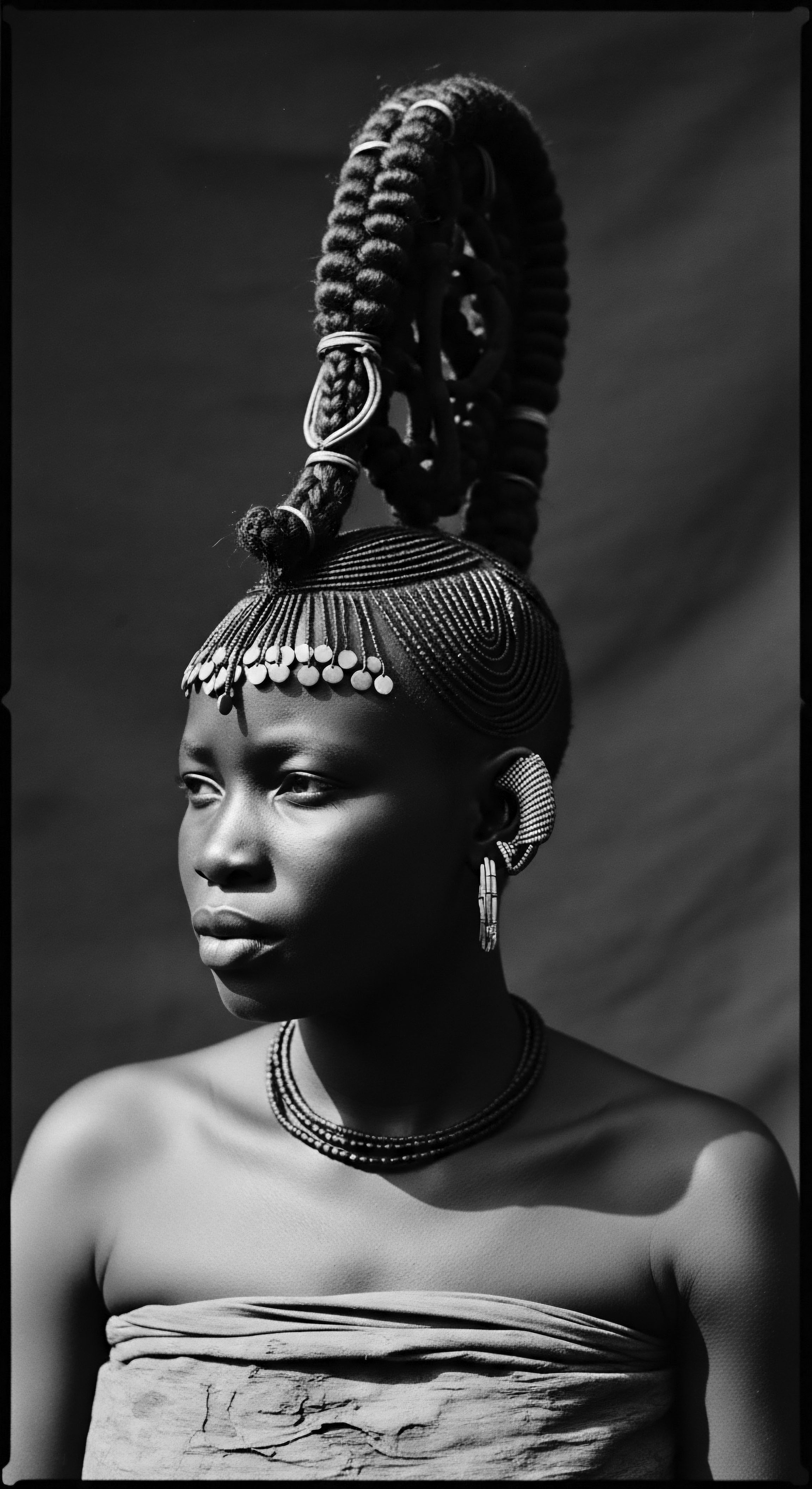
Holistic Care as an Act of Ancestral Connection
The regimens for healthy textured hair today, while often incorporating modern product innovations, find their deepest roots in ancestral wellness philosophies. These philosophies understood hair care as an integral part of overall well-being—a practice that nourished not just the scalp and strands, but also the spirit. The selection of ingredients, the method of application, and the very act of tending to one’s hair were often imbued with intention and reverence.
Many traditional hair care components, such as shea butter, various plant oils, and specific botanical infusions, were chosen not only for their conditioning properties but also for their symbolic or medicinal significance within their originating cultures. This holistic approach recognized the interconnectedness of body, mind, and spirit, positioning hair health as a reflection of inner vitality and a connection to nature.
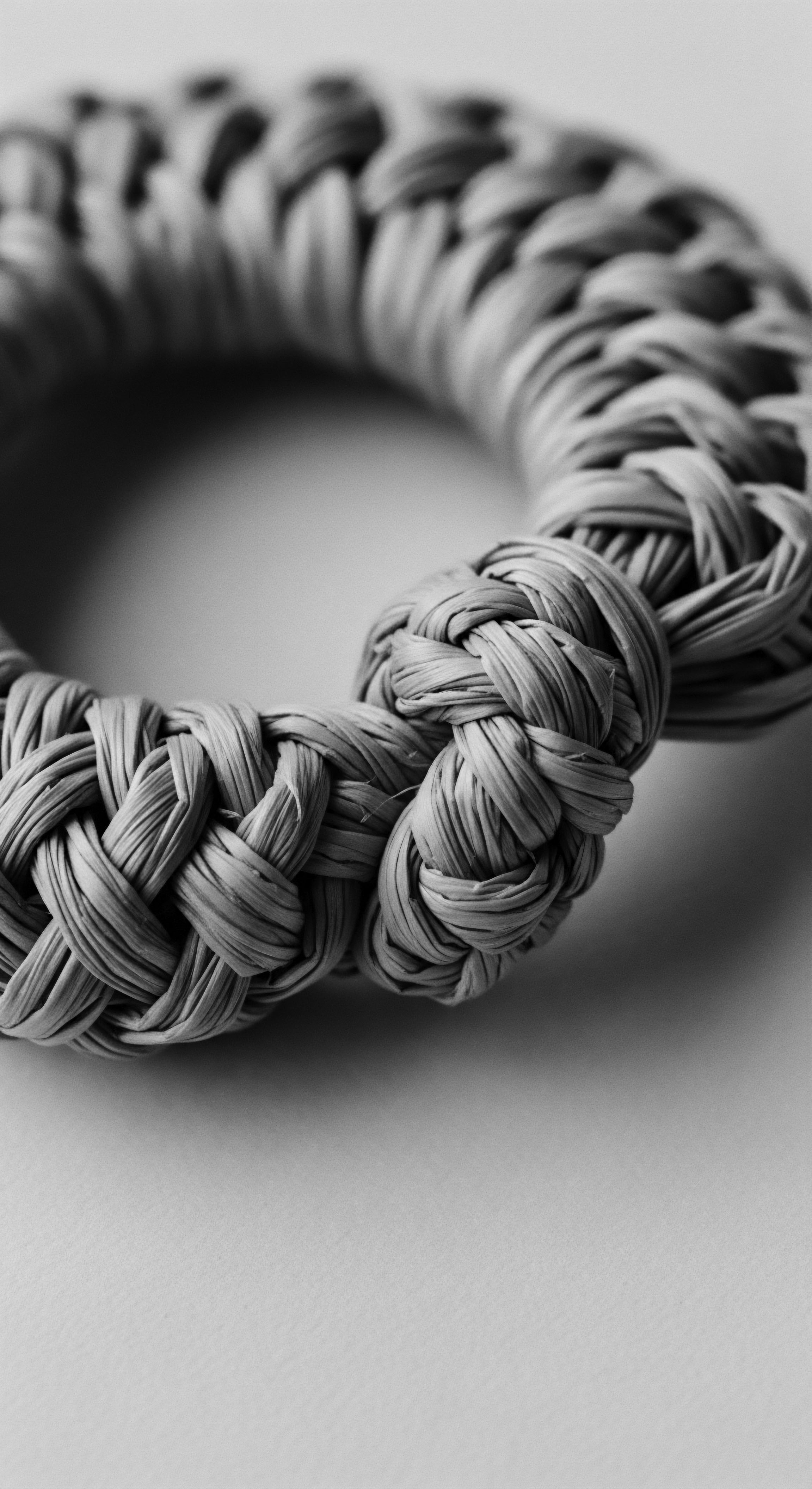
How Do Traditional Ingredients Connect to Modern Hair Health?
The scientific understanding of these ancestral ingredients often validates their historical uses. For instance, the fatty acids in shea butter provide deep moisture and barrier protection, precisely why it was, and remains, a staple for dry, textured hair. Similarly, various indigenous plant extracts, used historically for cleansing or strengthening, possess compounds with scientifically recognized anti-inflammatory, antimicrobial, or antioxidant properties. This convergence of ancient wisdom and contemporary understanding strengthens the argument for their continued use in modern regimens, honoring a continuous heritage of care.
The nighttime sanctuary, specifically the use of bonnets and silk scarves, is another example of a practice deeply rooted in the historical need for hair preservation and protection. While seemingly simple, these accessories guard delicate strands against friction and moisture loss during sleep, a wisdom undoubtedly born from centuries of observation. The modern bonnet is a direct descendant of head wraps worn not only for protection but also for cultural expression and modesty, maintaining a legacy of practical and symbolic head covering.
Textured hair’s profound capacity to convey historical messages lies within the continuous relay of ancestral knowledge, styling innovation, and acts of defiant self-expression.

Hair as a Site of Ongoing Cultural Resistance
Beyond historical messages, textured hair remains a potent symbol of ongoing cultural resistance. In societies that have historically sought to suppress or homogenize expressions of Black and mixed-race identity, the choice to wear natural styles, particularly those like locs or afros, continues to be a visible statement of pride and autonomy. This act challenges ingrained biases and pushes for wider acceptance and appreciation of diverse beauty standards.
Legislation like the CROWN Act in the United States, which prohibits discrimination based on hair texture and protective hairstyles, underscores the ongoing need for legal protection against hair bias. The very existence of such laws confirms that hair is not merely a personal choice, but a deeply political one, intertwined with issues of racial discrimination and systemic inequity. This legislative action itself becomes a part of the historical relay, acknowledging past injustices and working towards a future of equitable acceptance for all hair textures.
| Historical Context of Conveyance Clandestine communication (e.g. Maroon escape maps in Suriname, (Price, 1999)). |
| Contemporary Relevance and Resistance Public assertion of identity and cultural pride through natural styles, challenging Eurocentric beauty norms. |
| Historical Context of Conveyance Symbols of spiritual connection, tribal affiliation, and social status in pre-colonial African societies. |
| Contemporary Relevance and Resistance Reclaiming ancestral aesthetics as a form of self-love and community affirmation, countering cultural erasure. |
| Historical Context of Conveyance The use of specific ingredients and rituals as a continuity of ancestral health practices. |
| Contemporary Relevance and Resistance Advocacy for clean beauty, natural product formulation, and holistic wellness approaches that center textured hair needs. |
| Historical Context of Conveyance The enduring power of textured hair lies in its ability to simultaneously echo historical narratives and catalyze ongoing cultural movements. |

Addressing Hair Problem-Solving with Ancestral Wisdom
Common textured hair concerns, such as dryness, breakage, or scalp irritation, are often approached today with a blend of scientific understanding and inherited wisdom. Ancestral solutions, such as regular oiling, gentle manipulation, and scalp massage, are finding renewed validation in contemporary hair science. These practices often promote scalp circulation, reduce friction, and provide essential moisture, directly addressing the underlying causes of common issues.
The holistic influences on hair health are also paramount. Stress, diet, and overall lifestyle choices profoundly impact hair’s vitality. Many ancestral wellness philosophies placed significant emphasis on nutrition from whole foods, stress reduction through communal activities, and spiritual balance as foundations for physical health, including hair.
This integrated view, recognizing hair as a barometer of overall well-being, is a powerful legacy that continues to inform and enrich modern textured hair care. It encourages a deeper look at wellness beyond external applications, fostering a sense of inner harmony that radiates outwards.
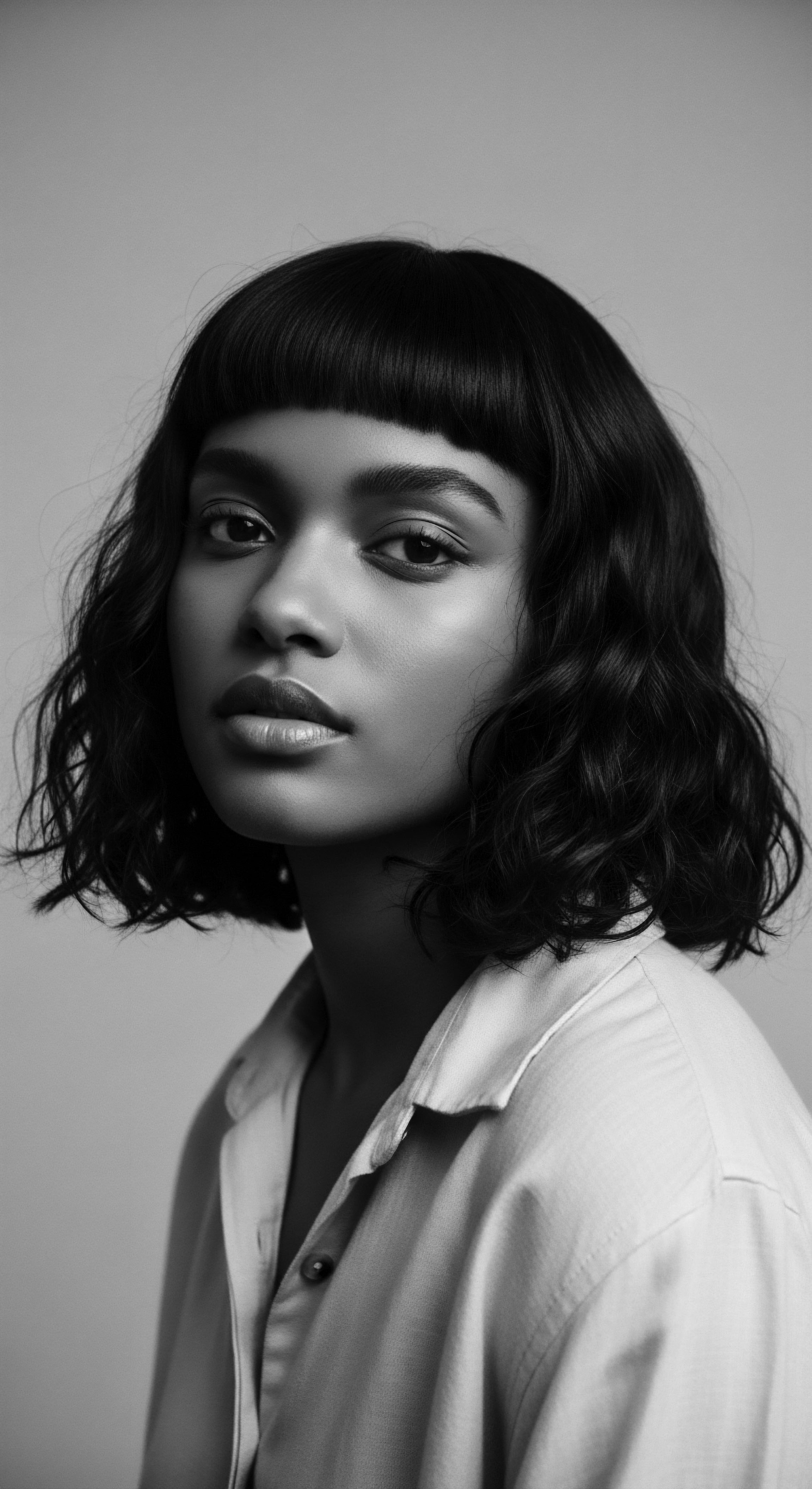
Reflection
The journey through the roots, rituals, and relays of textured hair reveals an undeniable truth ❉ these strands are indeed profound conveyors of historical messages and powerful symbols of cultural resistance. From the deep past, where coiling patterns told tales of tribal belonging and spiritual conviction, to the present, where every natural curl stands as a vibrant declaration of identity, hair has consistently served as a testament to resilience. It is a living, breathing archive, each strand holding a piece of a magnificent, unbroken story. The heritage of textured hair is not merely a collection of past events; it is a dynamic, evolving force that continues to shape individual and collective narratives, reminding us that true beauty blossoms from an authentic connection to one’s lineage.

References
- Price, Richard. (1999). The Convict and the Colonel ❉ A Story of Colonialism and Resistance in the Caribbean. Beacon Press.
- Byrd, Ayana D. & Tharps, Lori L. (2014). Hair Story ❉ Untangling the Roots of Black Hair in America. St. Martin’s Griffin.
- Mercer, Kobena. (1987). Black Hair/Style Politics. Routledge.
- Rooks, Noliwe M. (1996). Hair Raising ❉ Beauty, Culture, and African American Women. Rutgers University Press.
- Tetteh, Gifty. (2018). African Traditional Hair Braiding. Createspace Independent Publishing Platform.
